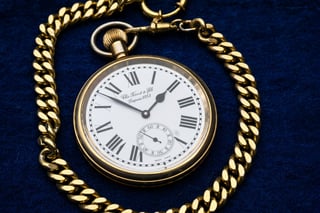When you’re just starting out as an entrepreneur, it can be tempting to work for whatever price is on the table. You’re just glad to have money coming in the door, right?
Well, today we’re calling upon you to change your willy-nilly pricing game. Plant your stake in the ground and set a minimum price for your product or service!
In the post ahead, we’ll explain why setting a minimum price is a necessary part of doing business. We’ll also look at some of the crazy and kooky science that proves pricing is psychological warfare.
Why set a minimum price?
Setting a minimum price point for whatever you’re selling affects two things:
- Your customer’s perception of you
- Your bottom line
Your customer’s perception of you sets the tone for how much they’re going to be willing to pay for the duration of the time you work together.
 For example, when you walk into Walmart, you know you’re bargain shopping. If they suddenly decided they wanted to become a luxury brand and jacked up all their prices by 300%, their current customer base would disappear. What’s more, Walmart wouldn’t suddenly attract a slew of high-income customers, because they’ve positioned themselves as a bargain brand for years and years.
For example, when you walk into Walmart, you know you’re bargain shopping. If they suddenly decided they wanted to become a luxury brand and jacked up all their prices by 300%, their current customer base would disappear. What’s more, Walmart wouldn’t suddenly attract a slew of high-income customers, because they’ve positioned themselves as a bargain brand for years and years.
The same holds true for more expensive lines. If you walk into a Mercedes Benz dealership, you know exactly what you’re getting into and how much you’re going to pay. This is because they’ve set a standard for luxury. A Mercedes costs a certain amount and everyone knows it. They won’t accept any less.
When you set a minimum price, you help decide how the customer perceives your brand.
The other side of the coin is your bottom line.
If your goal is to bring in $100,000 in revenue each month, you can’t waste time dealing with price hagglers. We also call these tire kickers—people whose M.O. is to shop around until they find the lowest possible price.
Setting a minimum price gets rid of the tire kickers. It’s nothing personal; it’s just not a good fit if they’re not willing to pay your minimum price.
Make sense? Now, let’s get into some strategies for finding your perfect price and understanding why consumers shop with their emotions instead of their minds.
The power of 9’s
If you’ve ever spent any time at a shopping mall, you’re already familiar with the power of 9’s.
Think about it: when was the last time you saw a pair of jeans selling for $50? Probably not recently, because they’re almost always priced at $49 instead.
The same goes for pricing at restaurants, drugstores and yes, even service-based businesses. Although $49 is just a dollar away from $50, our brain associates it more closely with the lower price point of $40.
The power of 9’s isn’t just an unreliable trick of the subconscious—there’s research to back it up. In a series of experiments, researchers from MIT and the University of Chicago studied the effectiveness of pricing ending in the number nine. What they found was surprising.
In one test, they tracked sales of an identical women’s shirt at three price points: $34, $39 and $44. Would you believe the $39 shirt sold best, even though it wasn’t the lowest price?
Funny how our brains work; to the majority of consumers, $39 seems like more of a deal than an identical item priced at $34.
Time over money

If you’ve decided to plant your pricing stake squarely in the high-end camp, research suggests your buyers will gladly fork over more for your services if you focus on time rather than money.
In a study published by the Journal of Consumer Research, researchers tested multiple scenarios in which different groups of buyers were shown different marketing messaging. Message #1 focused on money (i.e. “save $50!”), while message #2 focused on time (i.e. “enjoy an hour with us!”).
When the messaging revolved around time, a few interesting things happened. First off, consumers were willing to pay more for an identical product. And secondly, their feelings about the product they purchased were more positive.
The researchers concluded that when confronted with messaging about price, even when the message was about saving money, it tended to remind people of the money they’d inevitably be losing when they purchased the product.
The reverse was true for messaging about time: talking about time caused consumers to focus on their connection with the product, which boosted positive attitudes and decisions.
Crazy how that works, isn’t it?
The Weber-Fechner law
Originally used to describe human perception in general, the Weber-Fechner law states that the larger the magnitude of a stimuli, the less likely we are to perceive proportional changes to it.
Huh?
Let’s break it down in plain English.
If you’re holding a one-pound weight and someone adds another pound to it, you’ll probably notice the difference. However, if you began holding a 20-pound weight, you’re less likely to notice the additional pound.
The same is true for pricing. If your service costs $500 per month and you increase the price by $100, your customers are probably going to notice. Many will likely take issue with it.
However, if your service costs $10,000 per month, your customers will hardly notice a $100 price increase.
The Weber-Fechner law works the same way in reverse, when applied to discounts. The higher your initial price, the higher a discount will have to be in order for your customers to notice or appreciate it.
Take this law into consideration when setting your minimum price.
The bottom line
When you don’t set a minimum price, all hell breaks loose every time a new customer walks in the door. You have to do the same old song and dance of negotiating, going back and forth, wondering how much are they willing to pay?
When you set a minimum price, you eliminate all that stress and wasted time. But most importantly, you set a standard for your business and the kind of customer you’re willing to work with.
Have you set a minimum price? Leave a comment and let us know what helped you figure it out!
Never miss an update! Subscribe to our blog and be first to know every time we publish a new piece of entrepreneurial wisdom.













.png)




